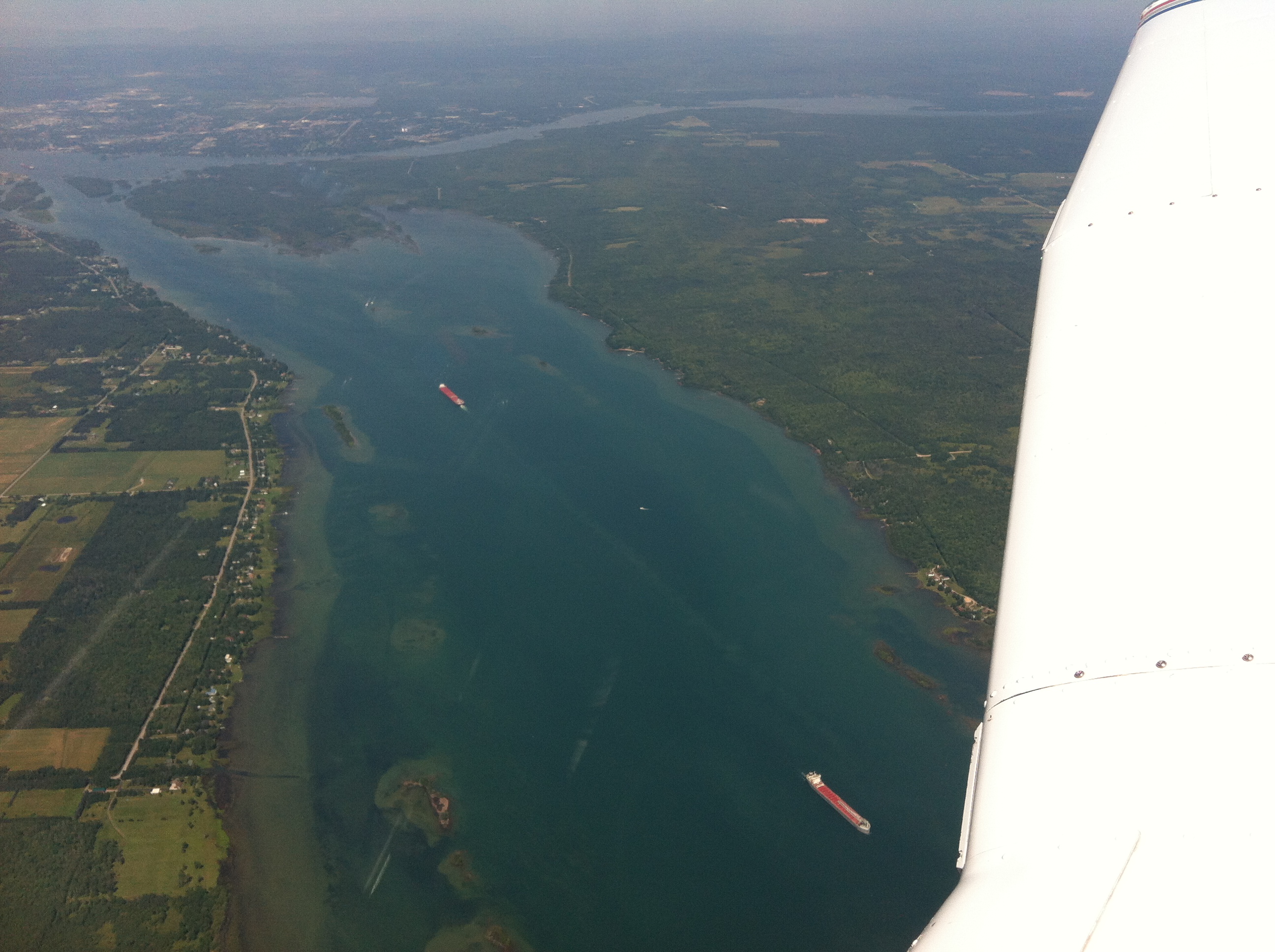The weather for the leg from Collingwood to Sault Ste. Marie was forecast to be good VFR flying conditions. The flight along the Bruce Peninsula and past Manitoulin Island was quite pleasant seeing all the small islands and lakes, however you could see some weather off in the distance along the next leg of our journey.
Nearing our destination we came across two lake freighters on their way to the locks at Sault Ste. Marie on the St. Lawrence Seaway. Perhaps these ships may have recently been in Hamilton at the steel mills.
After contacting the control tower at Sault Ste. Marie airport we were cleared for a straight in approach to Runway 30. This stop was planned to be a quick fuel stop then on our way to Thunder Bay.
A check of the weather revealed that indeed there would be some weather for us to contend with. From the GFA (Graphical Area Forecast) we could see that there was a cold front to cross prior to Wawa and there may be some thunder storms along that front. That meant that we were unable to go IFR and risk the possibility of being in cloud and encountering weather conditions beyond the capabilities of our aircraft.
We took off and not too far north of Sault Ste. Marie we could see that this leg was going to present some challenges. The initial portion was flown at relatively low altitudes due to the weather conditions. Just north of the airport along the south east shore of Lake Superior there is a Wind Turbine Farm stretching for about 10 miles. It looked very similar to what we had seen the other day along the north shore of Lake Erie.
For a significant portion of the flight there was considerable clouds sometimes above us, sometimes below us, sometimes both. Good VFR conditions prevailed.
It is always important to have what I call “tactical” weather information for the area where you are currently flying, and “strategic” weather information for an overall picture of the weather that lies ahead so you can make critical in-flight decisions.
The weather improved as we neared Thunder Bay but you could still see more significant weather off in the distance.
We landed at Thunder Bay and taxied in ending up parked in the same spot as on our trip eastbound.
That was enough flying for today. It was time to head to the hotel and relax.

















